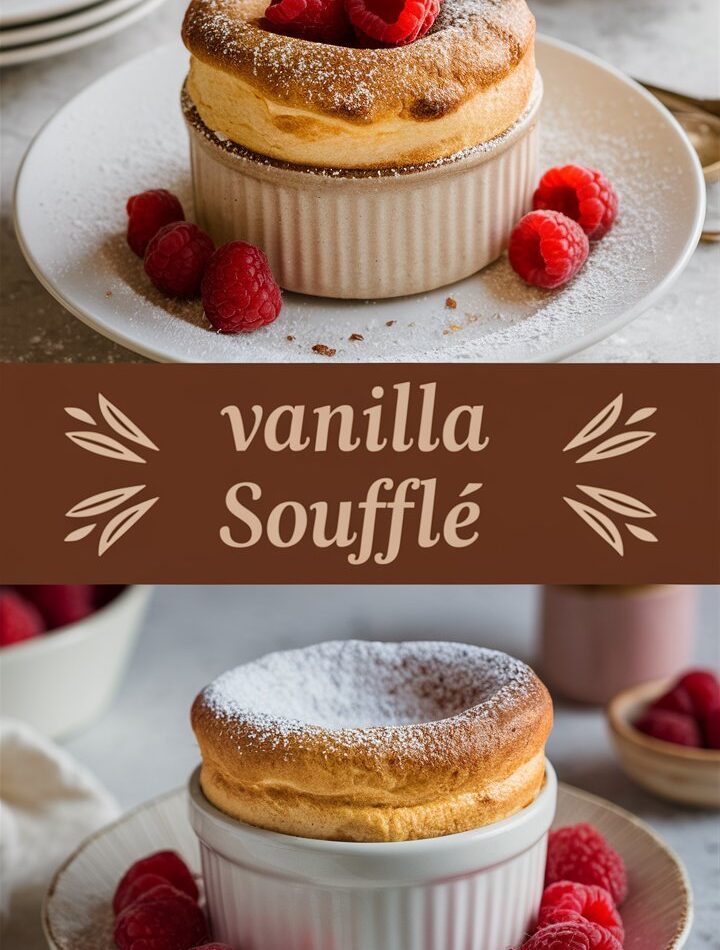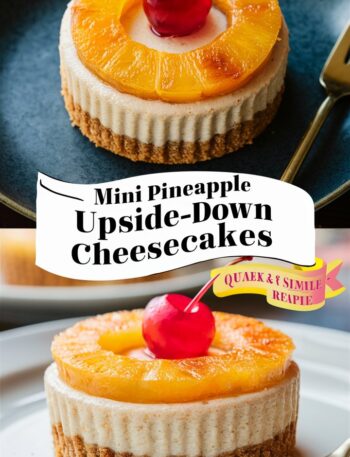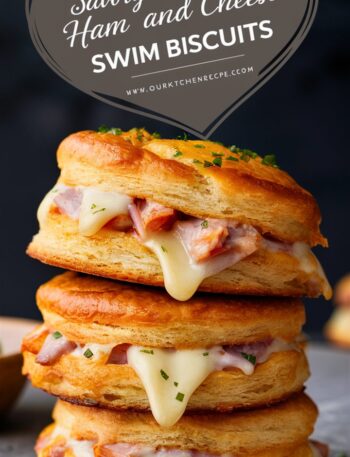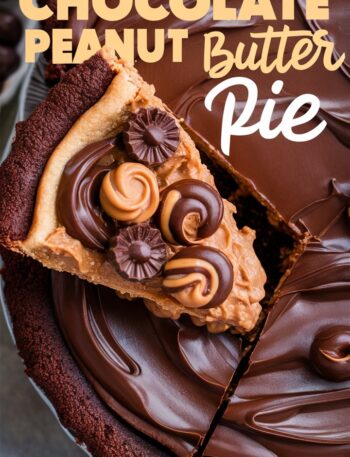The vanilla soufflé is a classic French dessert that has charmed food lovers for generations. With its golden top, airy texture, and warm custard-like center, it’s a dish that balances elegance with simplicity. While it may look intimidating, this guide breaks it down so anyone—from kitchen novices to pastry enthusiasts—can master it.
If you’ve been intimidated by the idea of soufflés collapsing or lacking height, don’t worry. This guide walks you through every detail, ensuring a foolproof method for perfect soufflés every time.
2. The History Behind Soufflé
Soufflé, which comes from the French word “souffler,” meaning “to blow” or “to puff,” originated in the early 18th century. Developed by French chefs, it was a marvel of early baking science—combining whipped egg whites and a flavored base to create something light yet rich.
Over time, soufflés gained popularity across Europe and North America, not just for their impressive appearance but for their delicate flavor and texture. Today, vanilla soufflé remains one of the most beloved variations, celebrated for its simplicity and versatility.
3. Why This Recipe Works
This vanilla soufflé recipe balances precision with ease. It uses simple ingredients, emphasizes technique, and highlights what matters most: temperature, timing, and gentle folding.
Key advantages of this recipe:
- Uses basic pantry ingredients
- Includes clear instructions for whipping and folding egg whites
- Prioritizes stability with cream of tartar
- Provides oven and bake-time optimization
- Designed to rise beautifully without collapsing prematurely
Unlike many overly complicated recipes, this one’s designed for consistency and success—even if it’s your first try.
4. Ingredients Breakdown
Let’s explore the purpose of each ingredient and why it matters.
| Ingredient | Purpose |
|---|---|
| Unsalted Butter | Used for greasing ramekins; allows soufflé to climb and puff evenly |
| Granulated Sugar | Sweetens the base; helps form a crisp, golden crust |
| All-Purpose Flour | Thickens the base; provides structure |
| Whole Milk | Adds richness; contributes to the custard-like center |
| Vanilla Extract | Provides primary flavor; opt for real extract over artificial flavoring |
| Egg Yolks | Richness and texture; combines with the base for a smooth custard layer |
| Egg Whites | The leavening agent; traps air to create rise |
| Cream of Tartar | Stabilizes egg whites; helps prevent collapse |
| Powdered Sugar | Light topping for elegance and an extra hint of sweetness |
Optional Add-Ins:
- Vanilla bean paste for more intense flavor
- A splash of orange liqueur or almond extract for depth
5. Tools You’ll Need
To make soufflé like a pro, the right tools make a difference.
- 4 oven-safe ramekins (6 oz each)
- Electric hand mixer or stand mixer
- Whisk
- Silicone spatula
- Saucepan
- Baking sheet
- Measuring cups and spoons
Optional but helpful:
- Kitchen scale (for exact measurement)
- Thermometer (to check egg temperature)
- Pastry brush (to evenly coat ramekins with butter)
6. Step-by-Step Instructions
Follow these steps carefully for consistent results:
✅ Step 1: Prepare the Oven & Ramekins
Preheat your oven to 375°F (190°C).
Generously butter the inside of each ramekin, then coat with granulated sugar. This ensures the soufflé climbs and doesn’t stick.
✅ Step 2: Make the Base
In a small saucepan, combine 2 tablespoons flour and ½ cup whole milk. Whisk over medium heat until thick and smooth (like pudding).
Remove from heat and stir in ½ teaspoon vanilla extract. Let it cool slightly, then whisk in 2 large egg yolks until fully incorporated. Set aside.
✅ Step 3: Whip the Egg Whites
In a clean bowl, beat 3 large egg whites and ¼ teaspoon cream of tartar until soft peaks form.
Gradually add ⅓ cup granulated sugar while continuing to beat. Stop when stiff, glossy peaks form.
✅ Step 4: Combine Gently
Use a spatula to fold one-third of the egg whites into the yolk mixture to lighten it. Then fold in the rest, being gentle to avoid deflating the air.
✅ Step 5: Fill and Bake
Spoon the batter into ramekins, leveling the tops. Run your thumb around the inside edge of each ramekin to help them rise straight.
Place the ramekins on a baking sheet and bake for 12–14 minutes, or until the tops are golden and have risen at least 1 inch above the rim.
✅ Step 6: Serve Immediately
Dust with powdered sugar and serve straight out of the oven. Soufflés are best enjoyed within minutes, while still puffed and warm.
7. Common Mistakes & How to Avoid Them
| Mistake | How to Avoid |
|---|---|
| Over-beating egg whites | Stop once stiff and glossy peaks form |
| Folding too aggressively | Use a gentle lift-and-turn motion to preserve air |
| Opening oven during baking | Keep the door shut! Sudden drops in temperature cause collapse |
| Under-greasing ramekins | Ensure butter and sugar coat every surface |
| Overfilling ramekins | Fill to about ¾ full for room to rise |
8. Expert Tips for the Perfect Rise
- Use room-temperature eggs. Cold eggs don’t whip as well.
- Use clean, dry bowls. Any fat (even a trace of yolk) ruins your whites.
- Tap ramekins lightly. Removes large air bubbles before baking.
- Serve immediately. Soufflés wait for no one.
9. Flavor Variations to Try
Want to experiment? Vanilla is just the beginning.
- Lemon Soufflé: Add 1 tsp lemon zest and a splash of juice.
- Chocolate Soufflé: Swap flour base for melted dark chocolate.
- Espresso Vanilla: Stir in 1 tsp instant espresso to the base.
- Coconut Vanilla: Replace half the milk with coconut milk.
These keep the structure the same but add flair to your dessert.
10. Making Soufflé Ahead of Time
While soufflé is best made fresh, you can prepare the base (milk, flour, yolks, vanilla) a few hours ahead. Keep it refrigerated.
Just before baking:
- Whip your egg whites fresh
- Fold in, fill ramekins, and bake
This is a smart strategy for dinner parties or romantic nights in.
11. Storing and Reheating Soufflé
Soufflés deflate quickly. That’s a fact. But that doesn’t mean leftovers go to waste.
Refrigerate leftovers for up to 2 days. Reheat gently in a low oven (300°F). The rise won’t return, but the texture becomes like a light pudding—still delicious.
Avoid microwaving, as it changes the texture too much.
12. Pairing Suggestions
Vanilla soufflé pairs beautifully with:
- Fresh berries or fruit compote
- Light whipped cream
- Crème anglaise (vanilla custard sauce)
- Dark chocolate drizzle
- Espresso or dessert wine
13. Troubleshooting Guide
| Problem | Likely Cause | Fix |
|---|---|---|
| Didn’t rise | Egg whites under-whipped or over-folded | Watch for stiff, glossy peaks |
| Collapsed instantly | Overbaked or underbaked | Bake until edges are set |
| Cracked top | Oven too hot | Stick to 375°F |
| Soufflé stuck in ramekin | Not enough butter/sugar | Use more coating |
| Heavy texture | Overmixed batter | Be gentle during folding |
14. Frequently Asked Questions (FAQ)
Q: Can I make this dairy-free?
A: Yes. Use plant-based milk (like oat or soy) and vegan butter. Results will be slightly different but still tasty.
Q: Can I double the recipe?
A: Absolutely! Just ensure you use more ramekins and avoid overcrowding the oven.
Q: What can I use instead of ramekins?
A: Any oven-safe cups or mini bowls will work—just adjust baking time.
15. Printable Recipe Card
Coming Soon: For your convenience, we’ll add a printable version of this recipe card so you can keep it in your kitchen binder!
16. Final Thoughts
Mastering the vanilla soufflé isn’t about perfection—it’s about patience, technique, and confidence. With just a handful of ingredients, you can create a dessert that’s as elegant as it is comforting.
Whether you’re cooking for guests or indulging solo, this soufflé recipe proves that beautiful food doesn’t need to be complicated.




